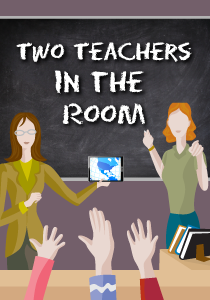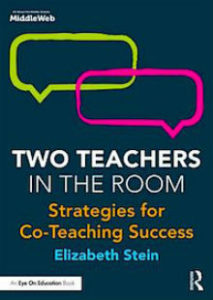The Perfect Planning Tool for School This Fall
A MiddleWeb Blog

This feels like the perfect time to revisit one of my favorite posts of all time here at Two Teachers in the Room.
Although it dates back to 2013, parts of the post continue to be relevant. In fact, during these remote learning times, it seems to me more relevant than ever before.
In my post from 2013, Chisel A Teaching Masterpiece, I discussed how high-quality instruction isn’t something that just happens – it must be intentionally crafted.
I used the analogy of a sculptor who uses a chisel to create his vision and work of art, comparing him to a teacher who uses the Universal Design for Learning (UDL) as a tool to create their vision and work of art – otherwise known as lesson plans and learning environments.
As we consider what school will look like in the fall, there is one thing we know for sure – we just don’t know…yet. We are in the throes of planning for several possible scenarios: fully in person, fully remote, or a hybrid structure. On our way to figuring out our return to school, let’s consider what we do know.
3 Things We Know Right Now
Through my coaching and consulting with education colleagues during these “remote times,” here are three things we have found to be true:
1. We can use what we learned these past months. We rose to meet the needs of an extreme transition, as our familiar physical place of teaching and learning with students was just taken away. Gone. We know many new things now, and we can apply our experiences over the past few months to guide our planning ahead.
2. We know we must be flexible and fully present to shape decisions that will make the best use of various learning environments during these uncertain times. Students and families are at the center of our decisions – and we must simultaneously make sure to include consistent time to take care of ourselves and our families.
3. UDL seamlessly and organically aligns with designing instruction for any and all environments that school may take place in this fall. (It’s right there in the name – universal.) A UDL structure and mindset gives educators the flexibility to move within and without the learning space – fully in person, fully remote, or using a hybrid model as the need arises.
Let’s continue with a UDL refresher. Check out this quick video from CAST. When you have more time to dig deeper into reviewing UDL principles and applications, check out this article via Harvard Ed Magazine, “How a little idea called Universal Design for Learning has grown to become a big idea — elastic enough to fit every kid.”
For now, stay with me a few more minutes, so we may continue to think this through.
The UDL Principles in Action
Multiple Means of Engagement involves providing options that match students’ interests, persistence, and self-regulation. We now have some experience with what engagement means during remote learning. Students must take charge of their learning like never before. In addition, parents need to be part of the co-teaching team to help guide students’ motivation and desire to want to log in and participate in learning activities.
Here are some examples of ways teachers use UDL to engage their students in multiple ways.
1. Cultivate relationships.
✻ Co-teachers connect with each student either through a video call, audio call, or email. Let them hear from you. Make the connection in some way, so they feel valued from the onset. Begin to create rapport early on…and keep it consistent throughout the weeks and months.
✻ Plan for small group and whole group live video calls. Small group nurtures connections that will flow into a comfort level to participate and feel like a part of the whole group.
2. Plan interactive lessons with the interests and needs of your students in mind.
✻ Add a humanizing touch to any Google Slide presentation by using screencastify to video record yourself sharing teaching points to increase a connection with your students. Each co-teacher could take a part – double the connection!
✻ Create an Escape the Room activity using Bitmoji Interactive Classroom.
✻ Check out these resources to consider how to naturally embed support for the social emotional side of learning when you’re teaching at a distance.
Multiple Means of Representation reminds us that learners perceive and comprehend information in different ways. Over the past few remote learning months, teachers have been flexible with the ways they present information. Here are some examples from my work:
✻ A human connection is necessary. We have done this over the past few months through phone calls, video calls, and digital tools that allow us to share our audio voice and visual smiling face!
✻ Text, images, video are all valuable resources. We have done this using Pear Deck, Flipgrid, nearpod, and Kami.
✻ We have found that once our experimental modes, methods, and tools were found to be successful, we stayed consistent with the tools to maintain learning and connections.
Multiple Means of Action and Expression supports our focus on guiding students to set goals for learning and strengthen decision making. The focus here is not just supporting students to become involved in the learning process, but in choosing the strategies that will work well for them to achieve their learning goals. Here are some examples from our work:
✻ We provided daily and weekly checklists to guide students’ action steps toward completing lesson objectives.
✻ We shared rubrics to guide students’ self-monitoring skills.
✻ We used multiple media tools to increase communication. (We know Google Tools offer a very comprehensive variety!)
✻ We offered a variety of ways for students to express their understanding and perspective.
These past few months of transitioning to remote learning placed all learners (students AND teachers) in a position to discover new and varied ways of doing things. In addition, the need to be flexible and embrace the emotional side of learning has been illuminated.
As we consider what school will look like in the fall and beyond… the Universal Design for Learning may be embraced as the natural tool for crafting our masterpieces with colleagues, students, and parents.
What are your thoughts? What tools have you found helpful?
Leave your comments below, find me on Twitter @ElizabethLStein and use #CoTeachat, and/or find me at my website and leave a comment for me there! Let’s keep learning together – we have great planning to do in preparation for the fall! And remember…take some time to relax this summer as well!






































Thank you for spending the time to craft this insightful article that brings together UDL, teacher collaboration, and distance learning. You’ve helped me better understand UDL, and I appreciated how you emphasized that UDL means multiple entry points.